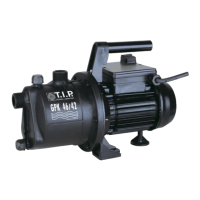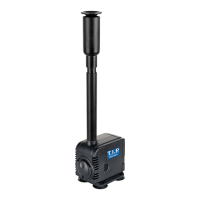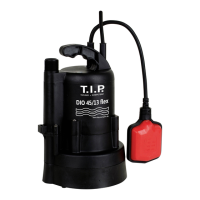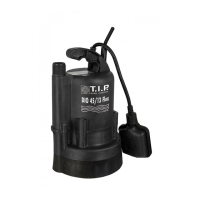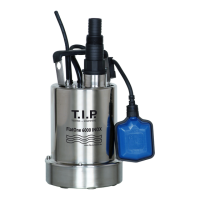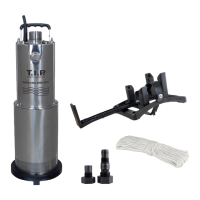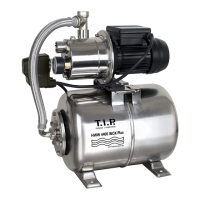Tra
nslation of the Original Operating Instructions
6
Please use the filling opening to fill the pump housing with water. Check to make sure that no leakage is present.
Then close the filling opening airtight. It is recommendable - but not indispensable - to fill the intake line with
water, too.
Petrol engine pumps are self-priming. This means that putting them to operation requires only the pump casing to
be filled with water, i.e. not necessarily the intake line, too. However, in this case the pump will take some more
minutes to suck in the liquid to be discharged. The additional filling of the intake line will facilitate and accelerate
the first suction cycle considerably. If the intake line is not filled with liquid, it might be necessary during putting to
operation to fill the pump housing more than once. This will depend on the length and diameter of the intake line.
To permit the air to escape, you should open a shut-off devices in the pressure line, such as for instance a faucet.
6.5. Starting the engine
To start the engine of an LTP 40/10, LTP 50/25 and LTP 80/48 model, you have to open the fuel cock first. This
step may be omitted with the LTP 25 model since this one is not equipped with a fuel cock. Please put the ignition
breaker to the “ON” position, the choke lever to the start position, and the throttle control to "full throttle".
Subsequently, pull the starter rope several times strongly until the engine starts. As soon as the engine is running,
slowly move the choke lever to the “operating” position. Priming will start as soon as the engine has begun to run.
During this process, please leave the throttle control in the “full throttle” position. As soon as the liquid is being
discharged evenly without any noticeable air admixture, priming is completed and the system is fully vented. The
throttle control can now be set according to the specific needs.
6.6. Operation
The petrol engine pump must not run with the withdrawal point being shut off.
The pump must not be operated permanently in the absence of water. This so-called dry
running - i.e. the operation of the pump without any water being discharged - may cause
considerable damage to the unit.
The petrol engine pump including the entire line system have to be protected from frost and
climatic influences.
Combustible or easily inflammable or explosive matters and objects are to be kept out of the
area of the pump while in operation.
Please do not top up fuel motor oil while the engine is running. Stop the pump for fuelling it.
During operation, some parts of the petrol engine pump become extremely hot, for instance
the exhaust pipe and its cover. After switching the device off until its cooling down, to avoid
injury by burning, the device must only be touched at the points provided for this purpose, e.g.
at the control elements or handles.
During the first 20 hours of operation of a new device, the engine must not be operated at its full capacity. During
this period of time, operation at two thirds of the possible speed is recommended. During this running-in period,
full-throttle operation is admissible only for short periods of time up to a max. of 10 minutes, for instance during
the priming operation at the time of putting the units to operation.
The pump must not be operated permanently in the absence of water. This so-called dry running - i.e. the
operation of the pump without any water being discharged - may cause considerable damage to the unit because
the required cooling is missing. If necessary, you have to stop the engine, check the intake line and the
connection ports for leakages and refill the pump body and possibly the intake hose, too, with water.
The petrol engine pump must not run with the withdrawal point being shut off. Do not let the pump “work” against
a closed pressure side.
Please do not top up fuel or motor oil with the engine running. For fuelling, please switch the pump off and allow
at least five minutes for it to cool down. During fuelling, and also during operation or as long as the device is
switched off, please make sure that it is standing upright on a level surface in order to prevent any spilling or
leaking of fuel.
Do not touch the exhaust pipe and its cover during operation since these parts become very hot and bear the
hazard of burning. Even after the device has been switched off, these parts remain very hot and must only be
touched after allowing for an appropriate period of four cooling down. Other parts of the engine, too, become hot
during operation. Therefore, please avoid to touch the unit during operation and afterwards from power-off to its
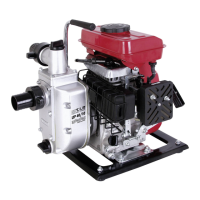
